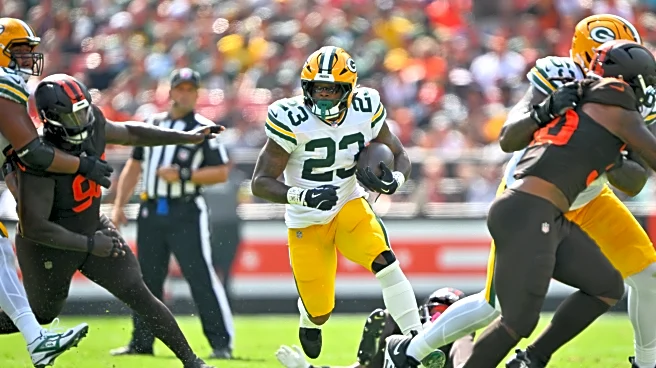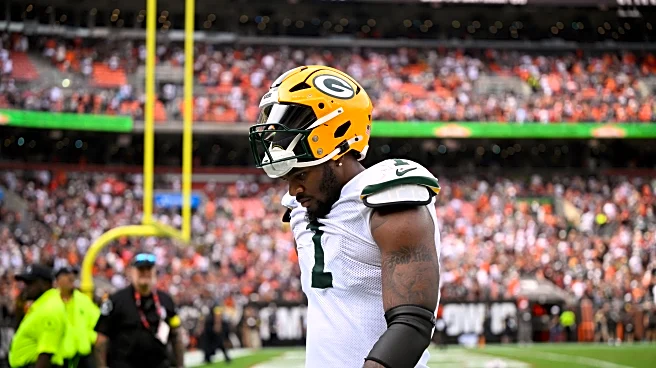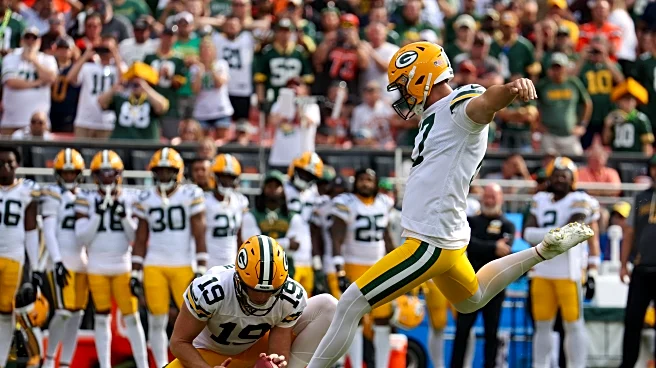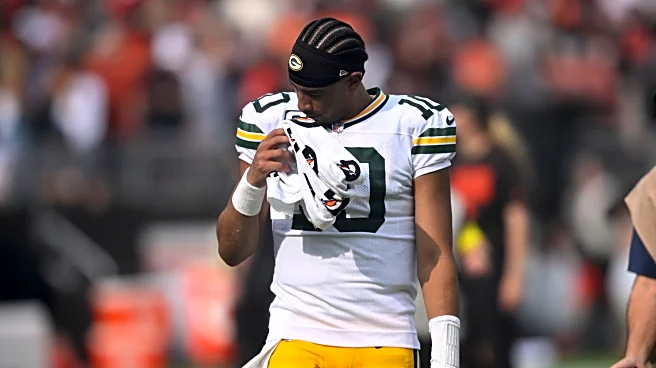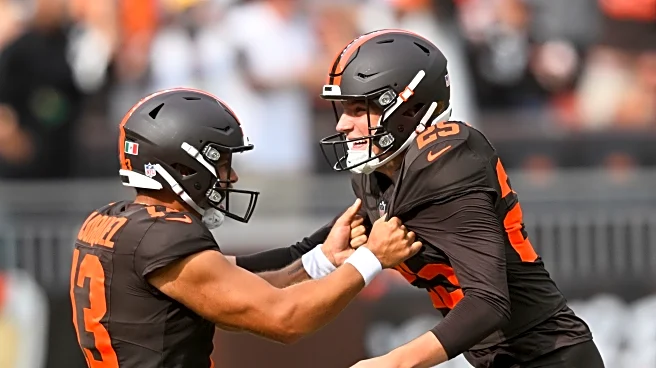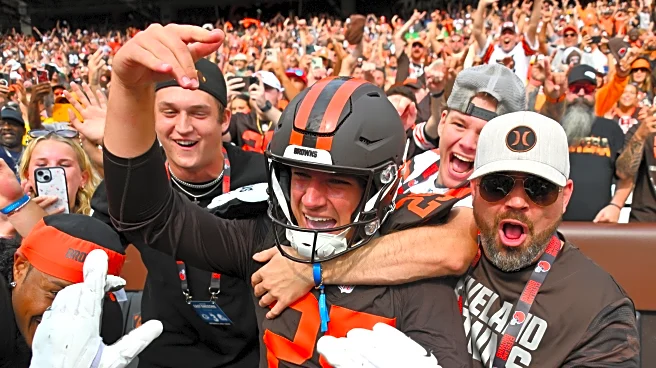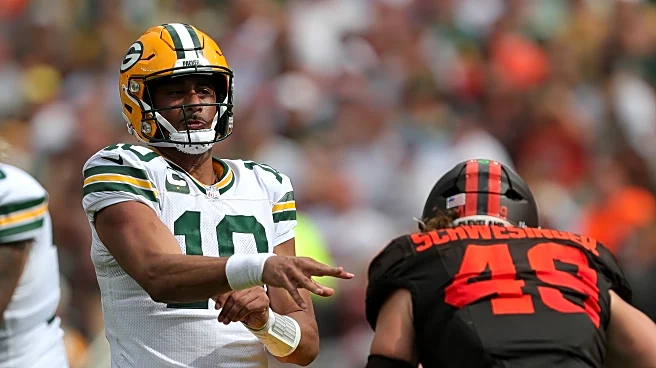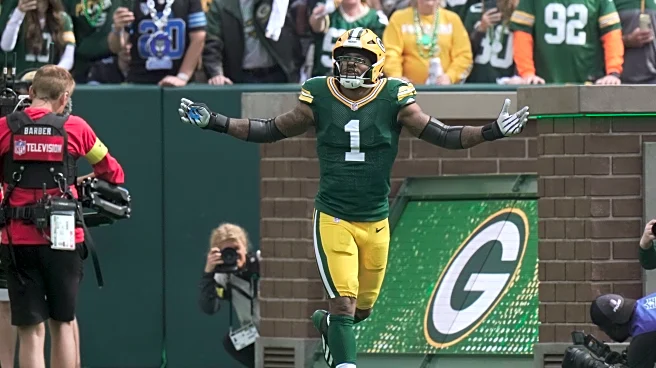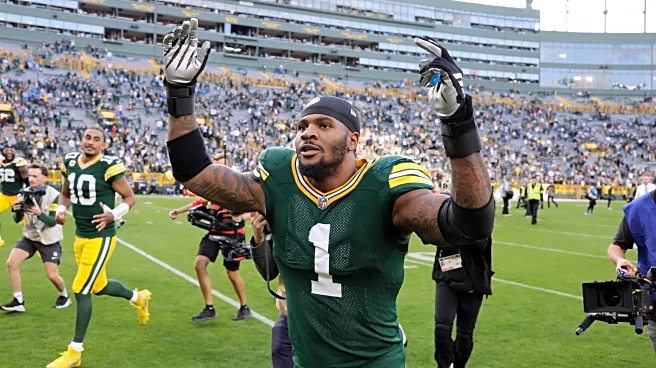Alright, it’s time for this week’s edition of “Who did the Green Bay Packers play, where did they play them and why?” As always, we released the official Week 3 snap counts on the night of the game, but
our detailed snap counts include plays where post-snap penalties occurred, ignore kneels, ignore spikes and include where players lined up on the field for these plays.
Let’s dive into the Packers’ usage against the Cleveland Browns.
As a reminder, each cell represents snap counts played, beyond the first column. A cell highlighted in red means that a player was injured for that game and was inactive. A cell highlighted in yellow means that a player was active for a game but left with an injury. W1 is the data from Week 1, etc.
Offensive Personnel

Slowly, the Packers have started playing more and more three-receiver sets. In Week 1, only 38 percent of their plays, about a third, featured more than two receivers on the field. That number jumped to 49 percent in Week 2 and finally 67 percent, over two-thirds, in Week 3.
Green Bay had plans to be a heavier team on offense, but they just can’t seem to get enough juice out of playing Luke Musgrave, who is now losing snaps to John FitzPatrick as the team’s second tight end. The Packers also only played 1 two-back or three-tight-end set against the Browns, despite playing 17 over the first two weeks of the season.
For whatever reason, they wanted to spread Cleveland out and pick them apart that way, instead of blocking things up inside out and taking shots down the field versus the Browns, who are known for stacking the box and playing man coverage. The result? Quarterback Jordan Love went from averaging 12.5 air yards per attempt with the highest deep pass rate in the league through two weeks to a passer who only threw two balls of over 10 yards all game: A Cover 2 hole shot to Matthew Golden and a Romeo Doubs pass that ended up being flagged for defensive pass interference.
Note: I’m including Bo Melton as a receiver for these purposes, just to make the personnel easier to consume.
Quarterback

The Savion Williams wildcat package is doubling. By Week 17, he’ll record 32,768 wildcat quarterback snaps in a single game. (This is not a serious prediction.)
Running Back

Okay, so there was actually movement on the running back front this week. For the first time this year, Emanuel Wilson actually received more snaps in a game than Chris Brooks, who is mostly a blocking back.
Overall, Brooks was the single back in only 1 of the Packers’ first 47 snaps, but was the lone back in 4 of the final 17. It’s an interesting choice to basically sit your blocking back in a game where you ended up playing eight offensive linemen…who knows if head coach Matt LaFleur wants that decision back.
Receiver


I want to talk about the outside receiver and slot receiver positions together this week. In Weeks 1 and 2, Matthew Golden and Dontayvion Wicks pretty much split equal time between outside receiver and in the slot. This week, though, Golden (27 snaps) massively out-snapped Wicks (10) outside, while Wicks (33) had the edge over Golden (16) in the slot. Don’t be surprised if that’s the new normal.
Third-round rookie Savion Williams continues to mostly play gadget roles for the team. Every defense should have alarm bells going off every single time he’s in the huddle. Quarterback Jordan Love has played only one fewer snap than Williams as an outside receiver through three games. Williams has only run three routes from a receiver position in 2025: two runoffs and a dig. All his routes this week came out of the backfield, two as a running back and once as a fullback.
Tight End

John FitzPatrick is now getting more burn than Luke Musgrave, which shouldn’t be much of a surprise at this point. The Packers don’t throw often to their second tight end, so the wide gap between FitzPatrick’s blocking ability (good) and Musgrave’s (poor) is a big difference maker. FitzPatrick also caught the first touchdown of his NFL career this week on a play-action scramble drill play at the goal line.
As a reminder, the receivers on this list generally are played in what I consider “tight end snaps” in insert looks (think what Allen Lazard did during his time with the team.) Running backs mostly get these reps when they’re wings who help chip pass-rushers in pass protection.
Offensive Line





Good grief. All eight offensive linemen who were active on the gameday roster for the Packers this week got time on offense versus the Browns.
Initially, Green Bay’s offensive line was Rasheed Walker, Aaron Banks, Elgton Jenkins, Sean Rhyan and Zach Tom (left to right). Tom dropped out after one play, though, due to the pain of the oblique injury that he attempted to push through. Tom injured his oblique in Week 1 and missed Week 2 entirely.
Instead of Anthony Belton or Darian Kinnard coming off the bench to play right tackle, which is what happened in the past two weeks, the Packers sent out Jordan Morgan at right tackle. Morgan…only played left tackle, left guard and right guard in the preseason and training camp. The results, if you missed the game, were ugly.
After 28 snaps, Morgan was kicked out to left guard, because Banks, who was playing through a groin injury, dropped out of action. Belton then replaced Morgan at right tackle. For a four-snap period, left tackle Rasheed Walker had a helmet issue, which led to Belton flipping to left tackle and Darian Kinnard playing right tackle. When Walker went back into the game, Belton flipped back to right tackle and Kinnard was benched.
Cluster f***.
At the moment, the Packers lead the NFL with nine different offensive line combinations played. No other team has more than seven this year. The team’s preferred lineup of Walker, Banks, Jenkins, Rhyan and Tom, the one that opened the games in both Week 1 and Week 3, has only played 21 total snaps together this year.
Per Pro Football Focus, Green Bay currently ranks 3oth in pass block grade up front. Their 15.1 graded pass block effort in Week 3 is the lowest in LaFleur’s career. They also tied the most sacks allowed under LaFleur with five versus Cleveland. The team was ranked 3rd in pass block grade with an 81.1 score in 2024.
There has been absolutely no continuity on the offensive line so far, and it showed up big time against the Browns. LaFleur said in his Monday press conference that he might have underestimated how good the non-Myles Garrett defensive linemen were coming into this game, and suggested that the team is playing Morgan, who has played three of five line spots in three weeks, at too many positions.
Defensive Personnel

The Packers’ callsheet is growing! Through two weeks, the only looks the defense threw out there were their 4-3 base, their nickel set (where they took off the third linebacker for an extra defensive back) and their “Cheetah” nickel, where a third defensive end replaced a second defensive tackle.
In this game, though, Green Bay debuted three more looks.
The Packers played this goal line look with four defensive tackles, two defensive ends, four off-ball linebackers and safety Xavier McKinney playing a linebacker spot. It’s the first time all year that Green Bay played with fewer than four defensive backs on the field. When Devonte Wyatt (knee) dropped out with injury, the Packers played this look with an extra defensive end, since they only had four defensive tackles on their gameday roster.
The Packers also figured out how to get defensive end Micah Parsons in a true linebacker look for the first time this year. Parsons did this a lot in Dallas, but hadn’t done so in Green Bay.
We’ve seen this “Penny” look before with Joe Barry, but with very different personnel. Under Barry, the Packers would play three 300-plus-pound defensive tackles on the interior with two edge defenders and a one true off-ball linebacker. In Green Bay’s new “Cheetah” Penny, edge defenders play on both sides of the nose tackle in defensive tackle alignments, while the off-ball linebackers (Edgerrin Cooper and Quay Walker) walk down to play the edge, allowing Parsons to be the lone off-ball linebacker.
The first snap that the Packers played out of this, Rashan Gary went unblocked for a sack.
The final new package the Packers played on defense was their Cheetah 4-3, which was their base 4-3 personnel, just with Lukas Van Ness replacing a second defensive tackle. They only did this once against Cleveland.
Overall, Green Bay played way more base defense (19 snaps) than last week (6 snaps), which we predicted based on how heavy the Browns wanted to play offensively.
Defensive End

The linebackers here got snaps on the edge in Goal Line and Cheetah Penny looks. They are not getting rotated in normally.
Over the last two weeks, Micah Parsons has out-snapped Rashan Gary 89 to 84, so we can go ahead and put that snap count restriction nonsense to rest. Parsons’ usage is still pretty disproportionate between nickel and base sets, though. He’s more likely to be on the field in nickel sets, which are usually played on passing downs, than 4-3 base sets, when Lukas Van Ness comes in to stop the run.
Barryn Sorrell didn’t contribute as an edge defender this week…
Defensive Tackle

…but Sorrell did get in as a Cheetah defensive tackle, a new role for him. Parsons was rarely featured as an interior rusher this week, with most of those snaps going to either Sorrell (six snaps) or Van Ness (nine). For perspective, Parsons, Kingsley Enagbare and Rashan Gary only combined for nine total defensive tackle reps against the Browns.
Nazir Stackhouse saw a jump in snaps this week, but they weren’t all in short-yardage or red zone situations, like in the past. The Packers simply needed another body to feed snaps to, as they’ve been limited to a three-man rotation at defensive tackle thus far in 2025. With the Devonte Wyatt knee injury looming, there’s a chance that Warren Brinson finally gets called up to the gameday roster in Week 4 versus the Dallas Cowboys.
It’s just hard to live with a three-man rotation at defensive tackle if opposing offenses are willing to grind out a game. That’s probably one reason why the Browns were finally able to pop back-to-back explosive runs in the fourth quarter, the only scoring drive where they started outside of the red zone all game.
Linebacker

There’s really nothing new here. Isaiah McDuffie is the third linebacker. Quay Walker and Edgerrin Cooper are every-down players. We talked about how Xavier McKinney played linebacker in Goal Line sets and Micah Parsons played linebacker in Penny sets already.
Cornerback

Carrington Valentine and Nate Hobbs have flipped from last week’s usage. Now, Hobbs is the preferred outside cornerback, with Valentine getting a few series here and there. Meanwhile, Keisean Nixon remains an every-down player.
Slot

Hobbs continues to play a couple of Cheetah snaps as the slotback in obvious passing situations, but Javon Bullard is the team’s primary slot defender. Bullard is in concussion protocol to start the week, though, so there’s a possibility that we’ll get Hobbs in the slot with Valentine outside in Week 4 against the Dallas Cowboys.
Safety

Bullard out-snapped Evan Williams in base 4-3 looks at safety in Week 1, with Williams mostly coming off the bench in nickel sets versus the Detroit Lions. Since then, it’s been all Williams at safety, no matter if the defense was in base or a subpackage. This positional battle seems to be over.

